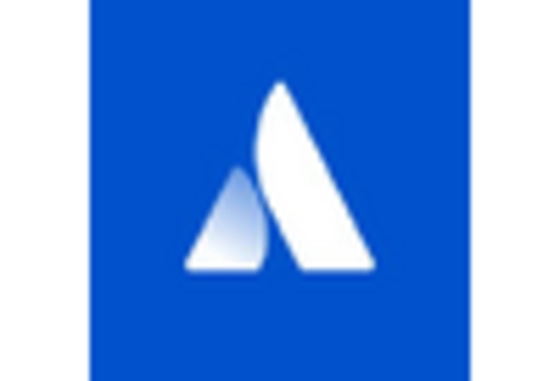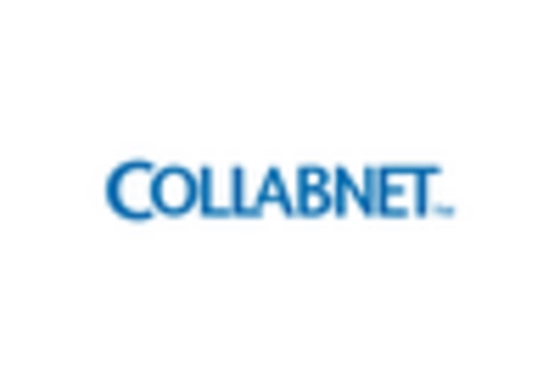Adoption of DevOps Practices
The Application Lifecycle Management (ALM) Market is witnessing a substantial shift towards the adoption of DevOps practices. This approach fosters collaboration between development and operations teams, aiming to enhance the speed and quality of software delivery. By integrating ALM tools with DevOps methodologies, organizations can achieve continuous integration and continuous delivery (CI/CD), which streamlines the application lifecycle. Recent studies indicate that companies implementing DevOps practices experience a 30% reduction in time to market, underscoring the effectiveness of this approach. As businesses seek to remain competitive in a fast-paced environment, the adoption of DevOps is likely to drive the demand for ALM solutions that support these practices. Consequently, the growing trend of DevOps adoption is expected to significantly impact the Application Lifecycle Management (ALM) Market.
Increased Focus on Regulatory Compliance
In the Application Lifecycle Management (ALM) Market, the heightened focus on regulatory compliance is becoming a critical driver. Organizations across various sectors, including finance, healthcare, and telecommunications, are mandated to adhere to stringent regulations governing software development and data management. This compliance necessitates the implementation of robust ALM practices that ensure traceability, documentation, and auditability throughout the application lifecycle. As a result, companies are investing in ALM tools that facilitate compliance with industry standards such as ISO, GDPR, and HIPAA. The demand for such solutions is expected to grow, as non-compliance can lead to severe penalties and reputational damage. Therefore, the increasing emphasis on regulatory compliance is likely to significantly influence the Application Lifecycle Management (ALM) Market.
Growing Importance of Data Analytics in ALM
The Application Lifecycle Management (ALM) Market is increasingly recognizing the growing importance of data analytics in enhancing decision-making processes. Organizations are leveraging data analytics to gain insights into application performance, user behavior, and development efficiency. By integrating analytics into ALM tools, companies can identify bottlenecks, optimize workflows, and make informed decisions that drive project success. Recent findings suggest that organizations utilizing data analytics in their ALM processes can improve project delivery times by up to 25%. This trend indicates a shift towards data-driven decision-making in software development, which is likely to enhance the overall effectiveness of ALM practices. As a result, the emphasis on data analytics is expected to significantly influence the Application Lifecycle Management (ALM) Market.
Rising Demand for Software Quality Assurance
The Application Lifecycle Management (ALM) Market is experiencing a notable increase in demand for software quality assurance. As organizations strive to deliver high-quality software products, the emphasis on testing and validation throughout the application lifecycle intensifies. This trend is driven by the need to minimize defects and enhance user satisfaction. According to recent data, the software testing market is projected to reach USD 60 billion by 2025, indicating a robust growth trajectory. Companies are increasingly investing in ALM solutions that integrate testing tools, enabling seamless collaboration between development and testing teams. This integration not only streamlines processes but also ensures that quality is maintained at every stage of development. Consequently, the focus on software quality assurance is likely to propel the growth of the Application Lifecycle Management (ALM) Market.
Emergence of Low-Code and No-Code Development Platforms
The Application Lifecycle Management (ALM) Market is being transformed by the emergence of low-code and no-code development platforms. These platforms enable users with minimal programming knowledge to create applications rapidly, thereby accelerating the development process. As organizations seek to enhance agility and reduce development costs, the adoption of these platforms is on the rise. According to industry reports, the low-code development market is projected to grow to USD 27 billion by 2025, reflecting a significant shift in how applications are developed. This trend is likely to influence the ALM landscape, as traditional development practices evolve to accommodate these new methodologies. Consequently, the rise of low-code and no-code platforms is expected to play a pivotal role in shaping the future of the Application Lifecycle Management (ALM) Market.


















Leave a Comment